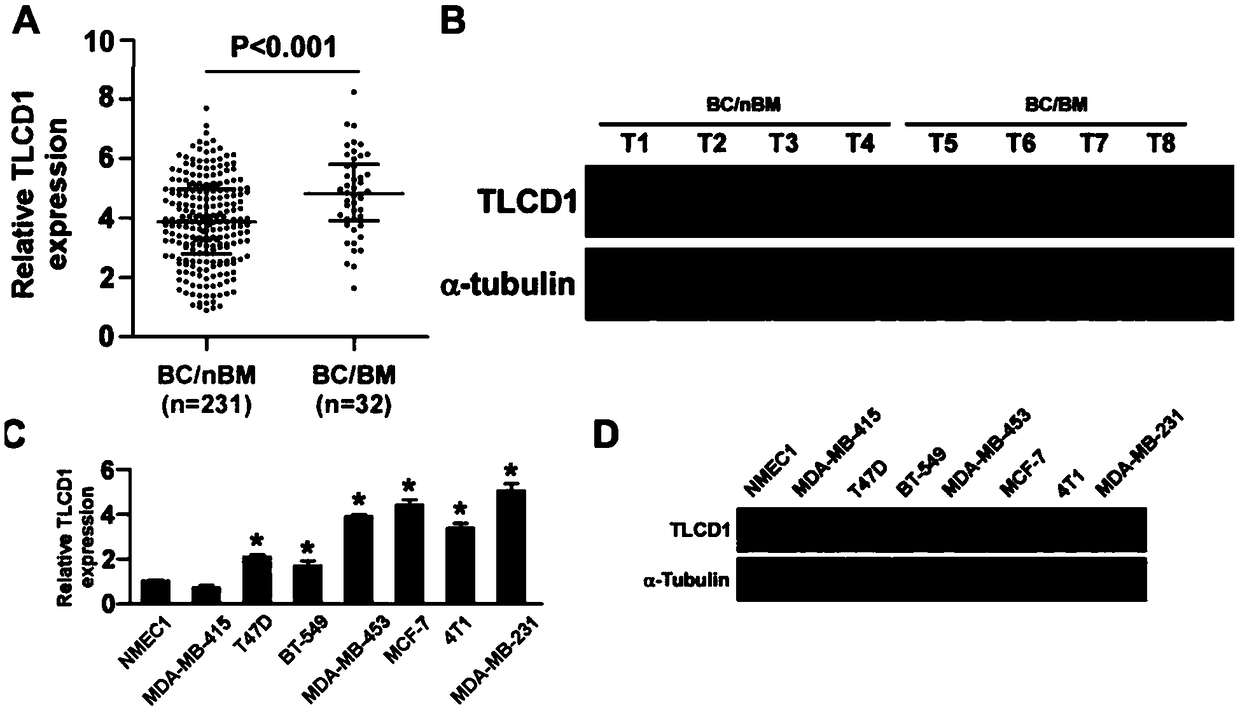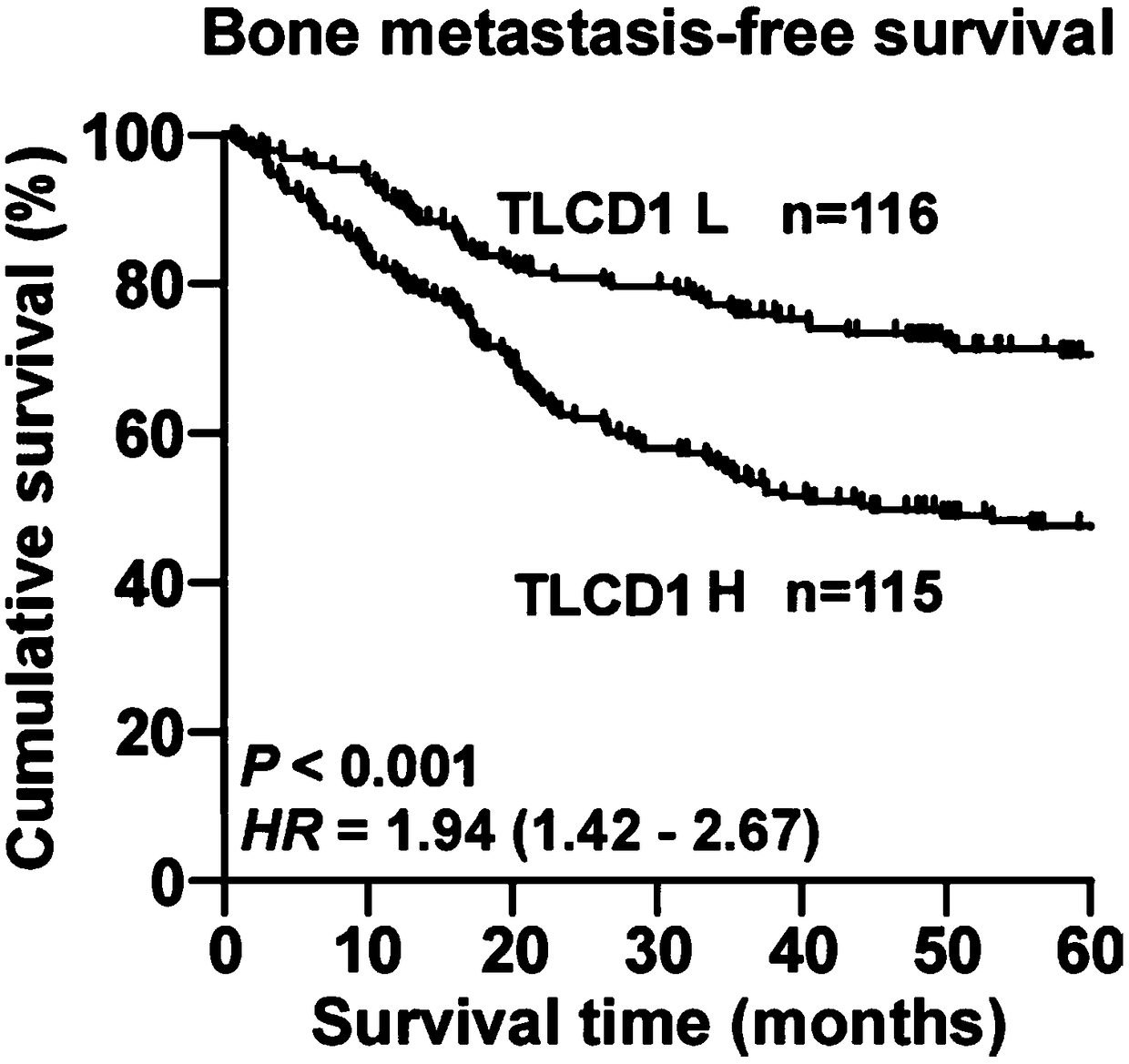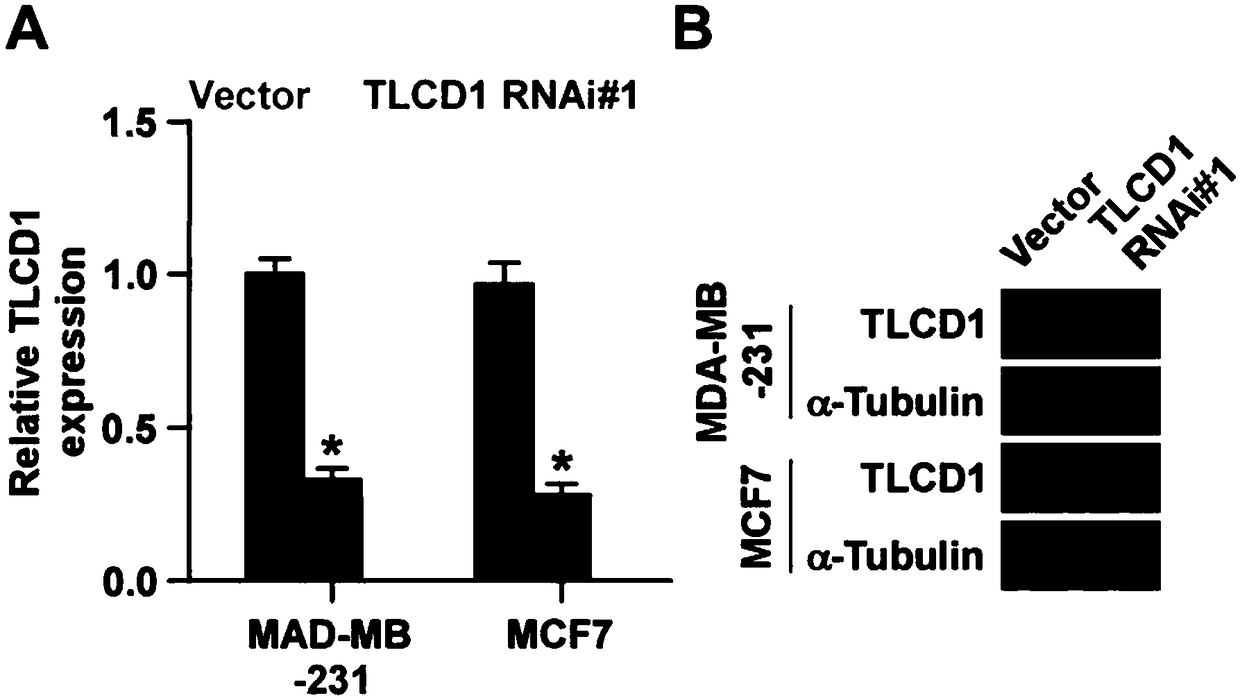Application of TLCD1 to diagnosis, prognosis and treatment of BC (breast cancer) metastasis
A breast cancer and bone metastasis technology, applied in the field of biomedicine, can solve problems such as affecting the quality of life and longevity of patients, increasing the economic burden of patients' families, and difficult clinical treatment.
- Summary
- Abstract
- Description
- Claims
- Application Information
AI Technical Summary
Problems solved by technology
Method used
Image
Examples
Embodiment 1
[0058] Example 1, TLCD1 is highly expressed in bone metastasis tissues and cells of breast cancer
[0059] In the collected tissue samples and cell lines, the mRNA and protein levels of TLCD1 were detected by fluorescent quantitative PCR and Western blotting, and the results were as follows: figure 1 As shown, compared with breast cancer tissues without bone metastasis, the mRNA and protein levels of TLCD1 in breast cancer tissues with bone metastasis increased ( figure 1 A and figure 1 B), compared with human normal breast epithelial cell lines, the mRNA and protein content of TLCD1 in breast cancer cell lines increased, and the mRNA and protein content of TLCD1 increased significantly in metastatic breast cancer cell lines, especially MCF-7 and MDA-MB-231 cell line ( figure 1 C and figure 1 D).
[0060] The above results show that: TLCD1 is highly expressed in bone metastasis tissues and cells of breast cancer. Therefore, the occurrence of bone metastasis of breast cance...
Embodiment 2
[0061] Example 2. High expression of TLCD1 indicates short survival time without bone metastasis
[0062] 231 breast cancer tissue samples without bone metastasis were divided into TLCD1 high expression group and TLCD1 low expression group according to the median value of TLCD1 expression, and the bone metastasis-free survival time was further analyzed in combination with the follow-up data of breast cancer tissue samples. The results are as follows: figure 2 As shown, the bone metastasis-free survival time of the TLCD1 high expression group was longer.
[0063] The above results show that high expression of TLCD1 indicates a short bone metastasis-free survival time. Therefore, by detecting the expression level of TLCD1 and using the bone metastasis-free survival time as a prognostic indicator, it can be used to predict whether there is a tendency to bone metastasis of breast cancer; The expression level of TLCD1 mRNA or protein in the breast cancer tissue sample of the subje...
Embodiment 3
[0064] Example 3, downregulation of TLCD1 gene expression can inhibit breast cancer cell migration and invasion
[0065] MDA-MB-231 or MCF-7 cells were transfected with RNA interference plasmids and control plasmids capable of down-regulating TLCD1 gene expression, and the results were as follows image 3 As shown, the mRNA and protein expression levels of TLCD1 gene in MDA-MB-231 and MCF-7 cells transfected with RNA interference plasmid were significantly down-regulated.
[0066] The transfected MDA-MB-231 and MCF-7 cells were subjected to invasion and migration experiments, and the results Figure 4 As shown, the migration and invasion abilities of MDA-MB-231 and MCF-7 cells transfected with RNA interference plasmids were significantly inhibited.
[0067] The above results indicated that down-regulating the expression of TLCD1 gene can inhibit the migration and invasion of breast cancer cells.
PUM
 Login to View More
Login to View More Abstract
Description
Claims
Application Information
 Login to View More
Login to View More - R&D
- Intellectual Property
- Life Sciences
- Materials
- Tech Scout
- Unparalleled Data Quality
- Higher Quality Content
- 60% Fewer Hallucinations
Browse by: Latest US Patents, China's latest patents, Technical Efficacy Thesaurus, Application Domain, Technology Topic, Popular Technical Reports.
© 2025 PatSnap. All rights reserved.Legal|Privacy policy|Modern Slavery Act Transparency Statement|Sitemap|About US| Contact US: help@patsnap.com



